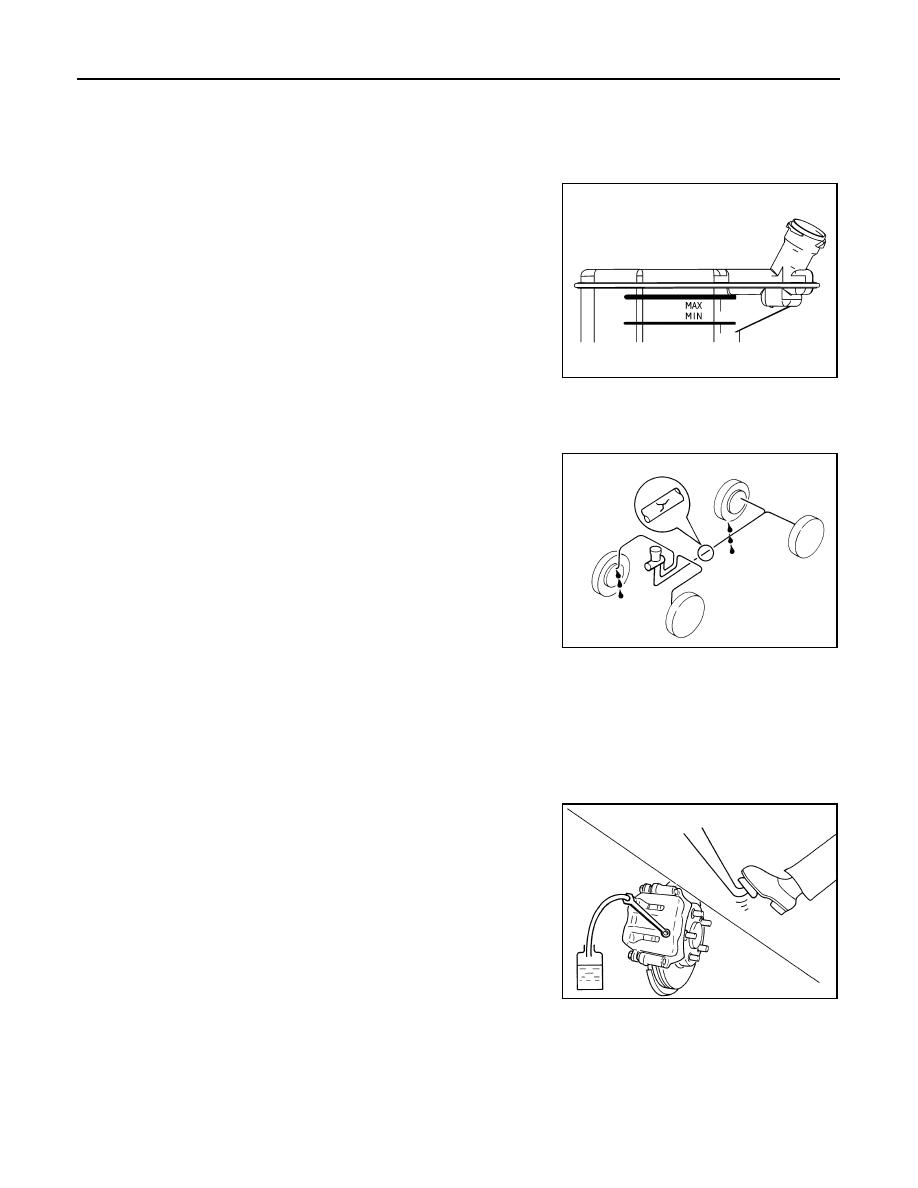Nissan Juke F15. Manual - part 88

BR-12
< PERIODIC MAINTENANCE >
BRAKE FLUID
BRAKE FLUID
Inspection
INFOID:0000000012200266
BRAKE FLUID LEVEL
• Check that the fluid level in the reservoir tank is within the specified
range (MAX – MIN lines).
• Visually check for any brake fluid leakage around the reservoir
tank.
• Check the brake system for any leakage if the fluid level is
extremely low (lower than MIN).
• Check the brake system for fluid leakage if the warning lamp
remains illuminated even after the parking brake is released.
• Check the reservoir tank for the mixing of foreign matter (e.g. dust)
and oils other than brake fluid.
BRAKE LINE
1. Check brake line (tubes and hoses) for cracks, deterioration or other damage. Replace any damaged
parts.
2. Depress the brake pedal with a force of 785 N (80 kg, 176 lb)
and hold down the pedal for approximately 5 seconds with the
engine running. Check for any fluid leakage.
CAUTION:
Retighten the applicable connection to the specified torque
and repair any abnormal (damaged, worn or deformed) part
if any brake fluid leakage is present.
Draining
INFOID:0000000012200267
CAUTION:
• Never spill or splash brake fluid on painted surfaces. Brake fluid may seriously damage paint. Wipe it
off immediately and wash with water if it gets on a painted surface. For brake component parts,
never wash them with water.
• Turn the ignition switch OFF and disconnect the ABS actuator and electric unit (control unit) har-
ness connector or the battery negative terminal before performing work.
1. Connect a vinyl tube to the bleed valve.
2. Depress the brake pedal and loosen the bleeder valve to gradu-
ally discharge brake fluid.
Refilling
INFOID:0000000012200268
CAUTION:
• Turn the ignition switch OFF and disconnect the ABS actuator and electric unit (control unit) har-
ness connector or the battery negative terminal before performing work.
SFIA2634J
SBR389C
BRA0007D